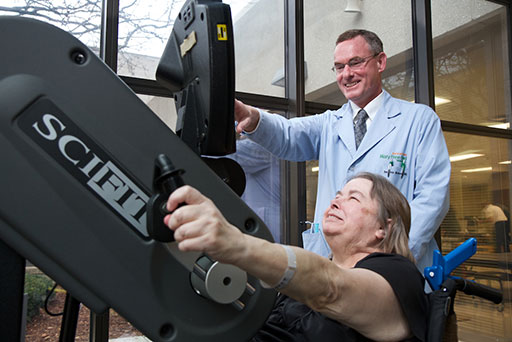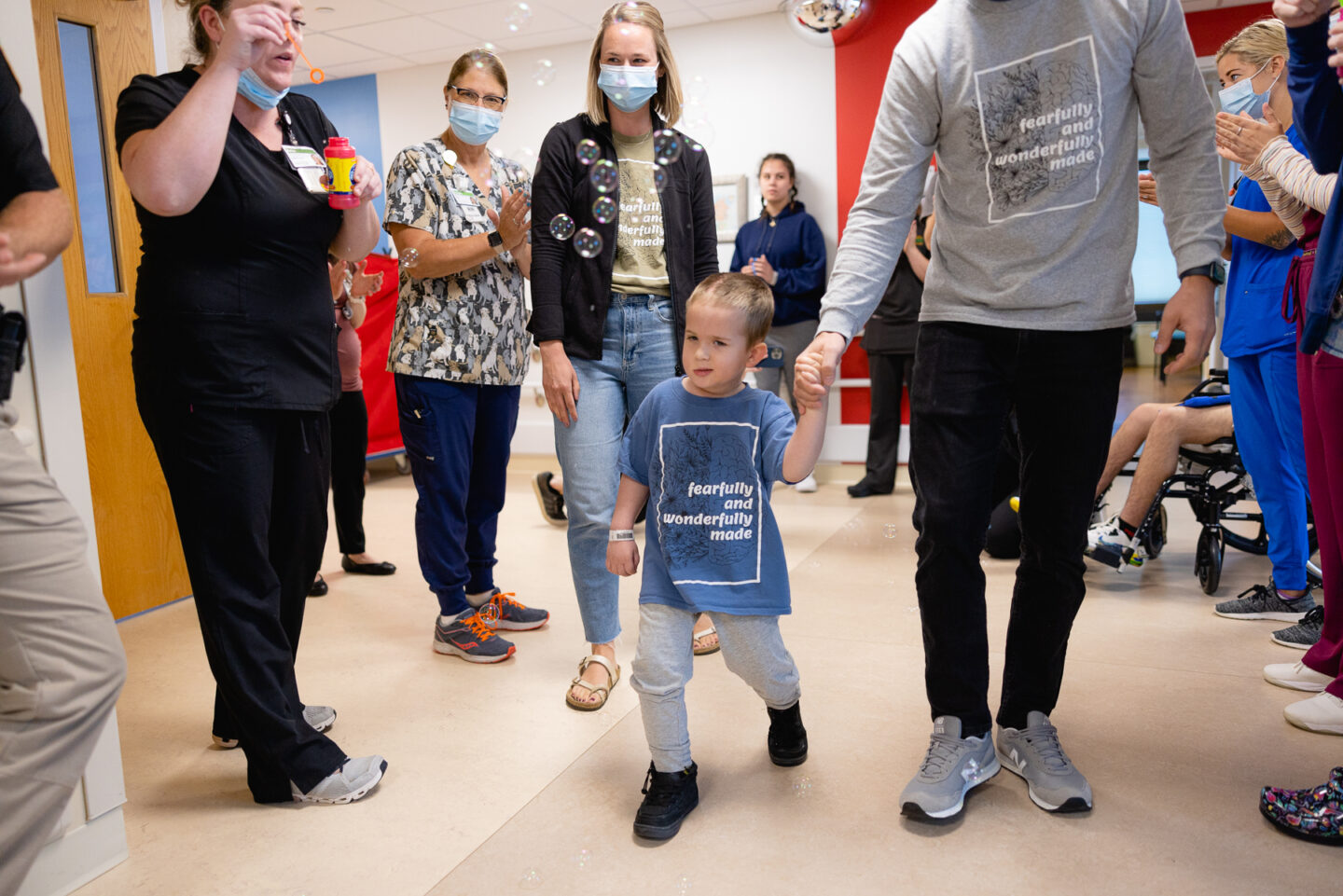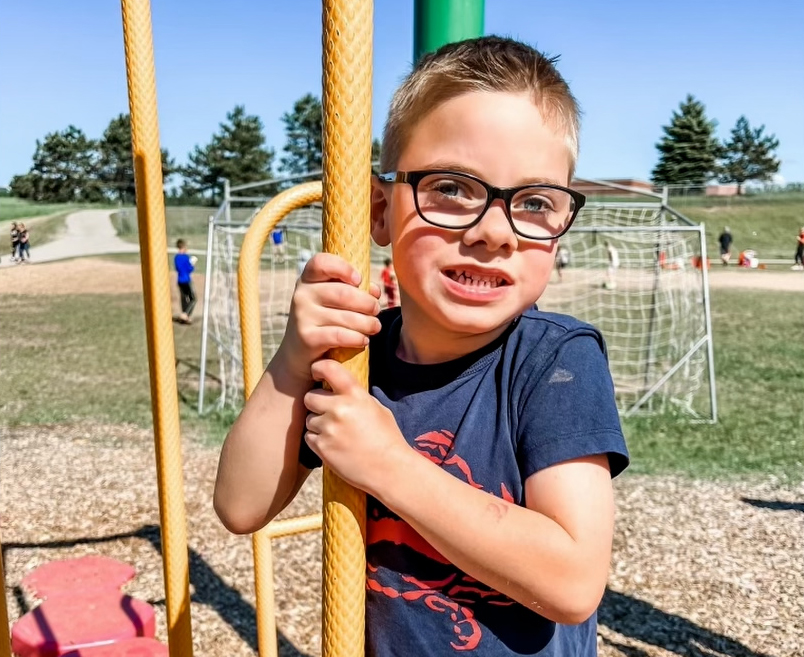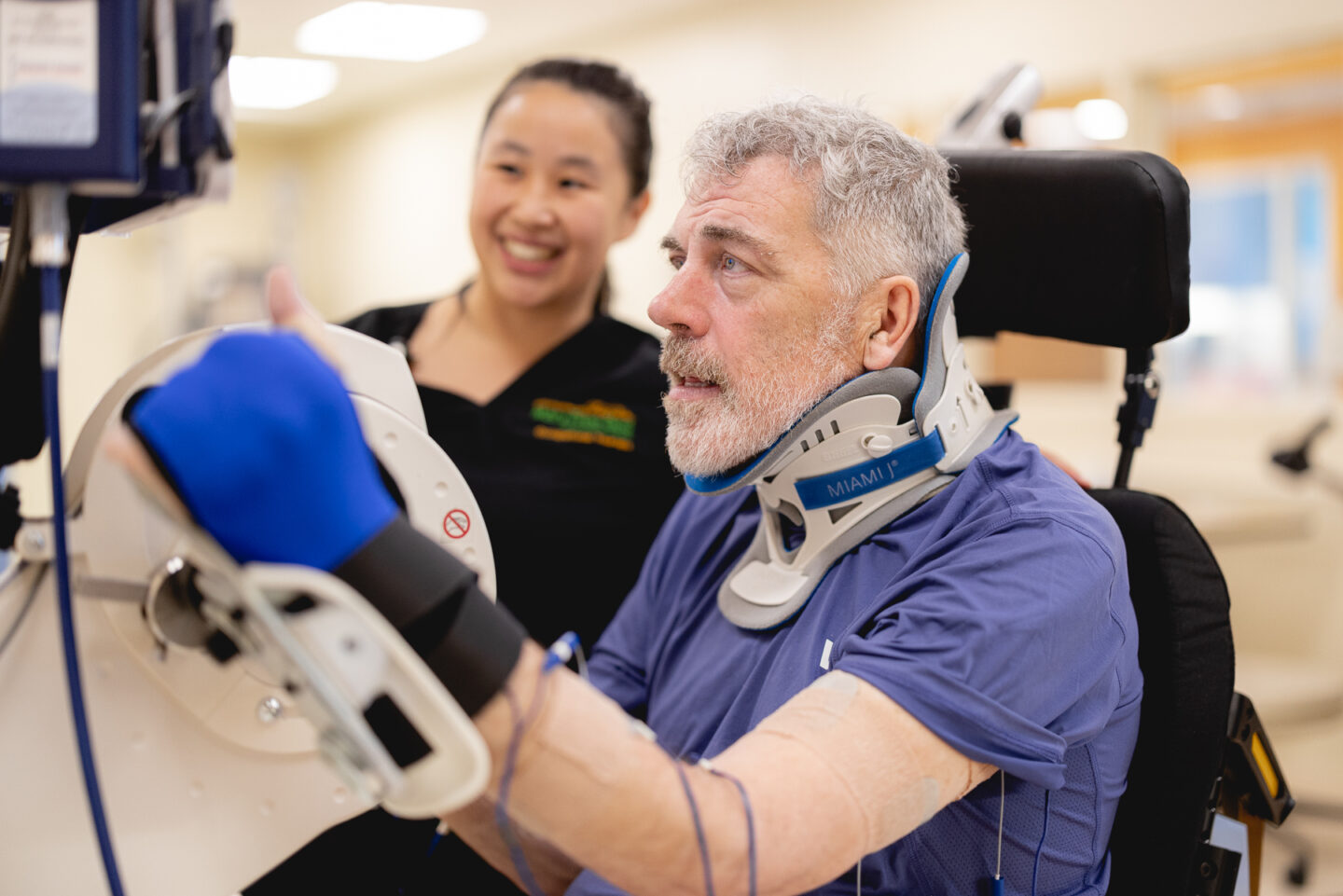Posted on April 19, 2010
Expert Information: Amputation & Prosthesis
 Dr. Benjamin Bruinsma has worked at Mary Free Bed for nearly 20 years. He’s the director of the amputee, orthopedic, and stroke programs.
Dr. Benjamin Bruinsma has worked at Mary Free Bed for nearly 20 years. He’s the director of the amputee, orthopedic, and stroke programs.
Therapy and prosthesis fitting
A prosthesis is a man-made substitute for a missing body part. It helps with function and mobility, and may give you more confidence in your appearance. The time it takes to get a prosthetic device, for upper or lower extremities, varies depending on your situation. It’s also important to account for the amount of time it takes for your residual limb to heal completely.
After you’re fully healed, which may take 4-8 weeks, the fitting process begins. Here at Mary Free Bed a typical prosthesis fitting begins and ends right at our hospital. We’ll begin by creating a plaster or computer impression (link CAD-CAM), create the prosthesis at the hospital, followed by check-up fittings with test sockets, and a final fitting which can be taken home. This process averages 2 – 6 weeks.
Going home with your prosthesis
When you arrive home with your prosthesis, you’re given a specific prosthesis wearing schedule. This schedule increases wearing time over 4-6 weeks until you are using you’re comfortable wearing your prosthesis all day.
Over that time, swelling in your limb reduces and as you increase your ability to perform more demanding activities with your prosthesis, your prosthesis will need to be modified. You’ll need frequent adjustments for up to a year after initial fitting to achieve a proper final fit that fits you perfectly.
Walking after an amputation
The ability to walk well with a prosthesis depends on many factors, with the level of amputation being one of the most important. In general, if your knee is saved, the better chance your walking pattern will return to near normal.
Returning to your normal walking pattern when your knee is lost is challenging; however, new microprocessor controlled knees, such as the C-leg, available at Mary Free Bed Prosthetics, have made this goal more achievable than in the past.
Pain and your prosthesis
If you‘re experiencing pain in your limb there may be several causes. When experiencing pain, your team of amputee rehabilitation specialists helps you sort through the reasons for the pain, and ultimately create solutions to control the pain.
You can visit Mary Free Bed’s Adult Amputee Clinic. At the clinic you’ll be treated by a physiatrist, nurse, prosthetist, and physical therapist. Your team works together with you to diagnose and treat your pain with the goal of controlling or eliminating it.
Pain can be in the residual limb or you may experience phantom limb pain. Phantom limb pain is the feeling of pain in the portion of the limb that was amputated.
Therapy duration
We’d like to see you as soon as possible after your amputation to get you going on a home exercise program to help you prepare for prosthesis use.
After you receive your prosthesis you’re usually seen 3 times a week to start. In therapy for a below-knee amputation or an upper-extremity amputation, therapy usually lasts 6 weeks. For an above-knee amputation, therapy can last 12 weeks.
At first, your home exercises might include practice taking the prosthesis on and off, and will progress to balance and walking activities. By the end of the first 6 weeks of therapy you’ll gain basic household and community ambulatory skills using some type of assistance, such as a cane or walker.
Some patients come back 6-12 months after the first 6 weeks of initial therapy for a more challenging level of training therapy, often learning to walk without a cane, or even training to run.
Mary Free Bed’s Amputee Mentor Program
Mary Free Bed Volunteer Services keeps an updated list of former amputee patients trained to mentor and share experiences with you. The American Coalition of Amputees also has a toll free phone number and can arrange for you to be visited or called by an amputee who’s the same gender and age group as you, with a similar type of limb loss.





